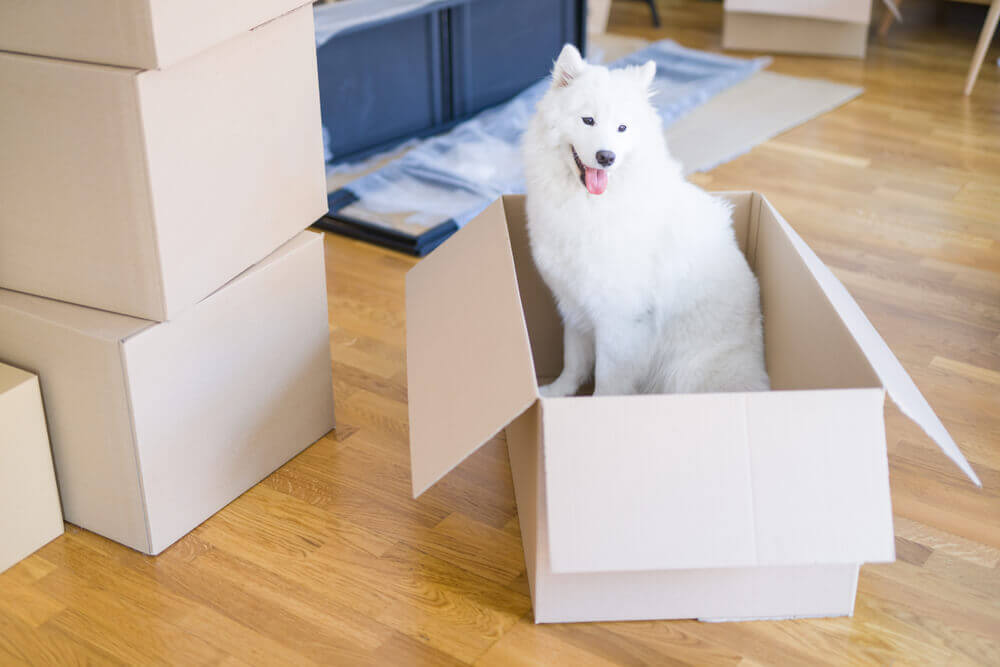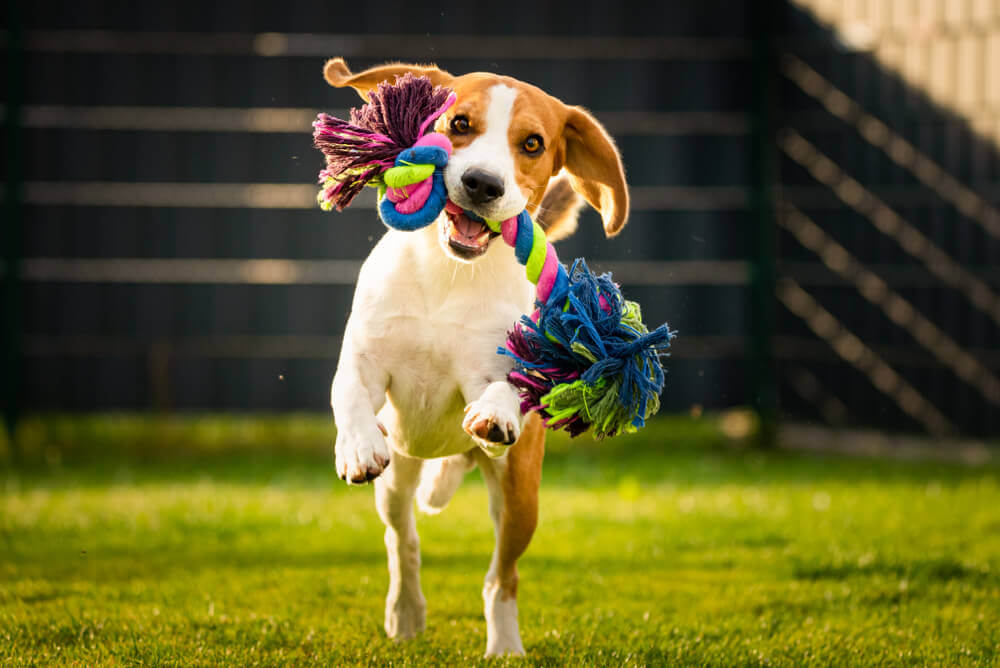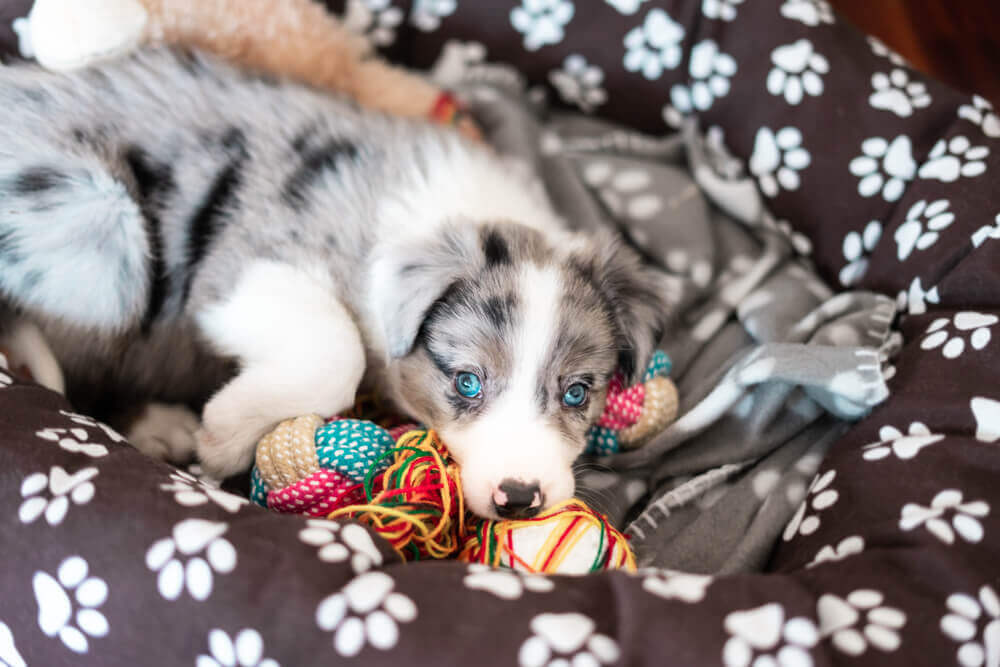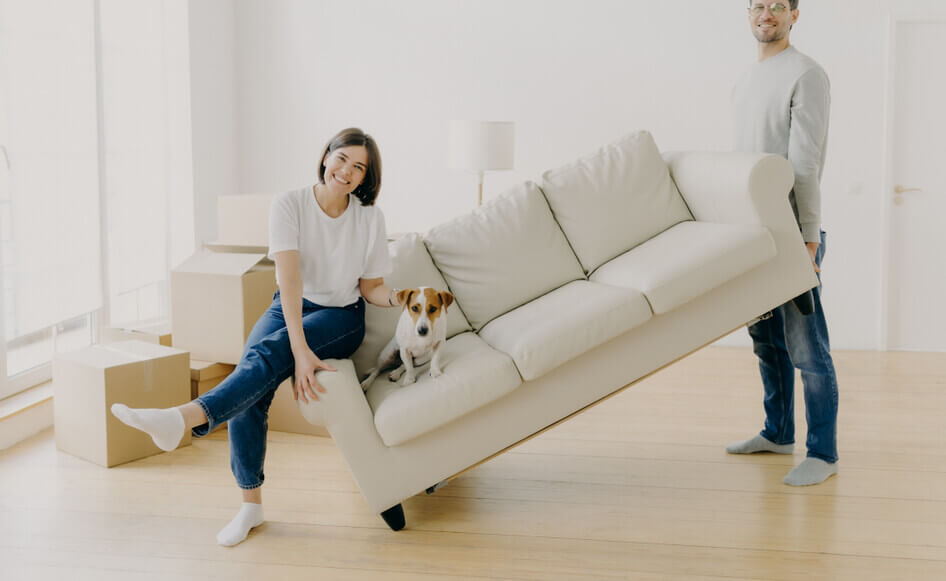How long does it take for a dog to get used to a new home? Is moving stressful for dogs? How do you help a dog cope with moving? We’ll answer these questions and more with 6 simple tips for moving pets into a new home.
How Do I Move with My Dog?
Can we agree that moving is stressful?! Between selling your old place, finding a new one, trying to purge things you don’t need, and then packing up the things you do—it can be quite the headache! Well then… don’t be shocked when your pooch seems stressed out too.
Dogs can sense our attitude and emotions, and they’ll always respond accordingly. If you seem calm, they’ll feel calm. But if you seem frantic, anxious, and stressed—they will too. So how do you help your dog not have a panic attack when you move? We’ve got 6 simple tips for moving with your dog, so you’ll both feel less stressed.
1. Help Your Dog Get Used to the Moving Supplies

With moving, comes tons of weird, new packing supplies. All of a sudden you’ll be bringing in boxes, bubble wrap, and loud packing-tape dispensers. Your sweet pup might get confused or scared.
Instead of plowing into the house with everything all at once, try bringing in the supplies one at a time. Let your dog take a minute to sniff each item, so he or she can get used to the supplies.
2. Stick to Your Dog’s Normal Routine
Dogs love their routines! If it’s almost time for dinner or our usual walk, my dogs will always let me know. The reason canines are like this is because it makes them feel comfortable. They know what to expect, and know they can count on you to deliver the expectation.
If you want to help avoid some of your pooch’s anxiety during the moving process, try to keep your normal routine as best as possible. The same wake up and bed times, same breakfast and dinner times, same walk and play times. Anything that your dog is expecting in a typical daily schedule will help them hold onto a sense of stability.
3. Give Your Dog Plenty of Physical & Mental Exercise

Just like with humans, helping your dog stay physically and mentally stimulated will help them to relax and take their mind off the anxiety. You can take your dog on daily walks to help them work off extra energy. And you can help them with mental exercise by using toys like a treat puzzle, a KONG toy, or even by playing hide-and-seek in the house.
4. Take Your Dog to Your New Home & Neighborhood
If you already have a place picked out, it’s a great idea to start introducing your pet to their new home. This will depend on when you gain access to your new house. If you already have possession of it, take your dog over to the new house once a day. They can start getting comfortable and familiar with the new space, new smells, and figuring out the new layout.
If you don’t have possession of it yet—no worries! Just take your pooch for a walk around the neighborhood at least a couple times a week. Even this small introduction to the area can help your pup feel more at home.
5. Let Someone Familiar Doggy-Sit on Moving Day
You can help both yourself and your dog on moving day by not having them at the house. You’re going to be stressed, busy, and moving a million miles a minute. It’s helpful to drop off your pooch at the familiar home of a family member, friend, or dog sitter before all the craziness begins.
6. Create a New Safe Space for Your Dog

Once moving day is over, it’s time to bring your pup into their new home. It’s going to be scary for your dog. And one of the best ways to help them feel at home is by creating that new safe space for them—right from the beginning. Find a spot in the house that is similar to their old “safe space.” And set up their dog bed, toys, and any other familiar comfort items they might have. They will instantly know that is their spot. And the familiarity of their personal possessions will help jumpstart the process of making them feel at home.
How to Help a Dog Adjust to a New Home
If you follow these 6 simple tips for moving with your dog, you and your pooch will have a much better moving experience. You can both be less stressed, and your pup can feel safe, knowing that you’re taking the time to help them adjust. The most important thing to remember throughout this process is patience. If you stay calm, your dog will follow suit.




















